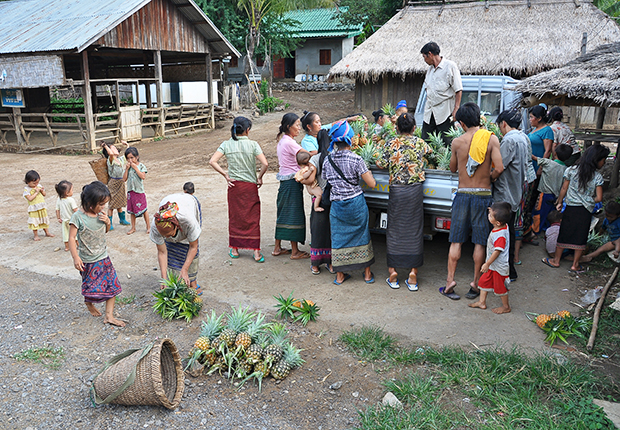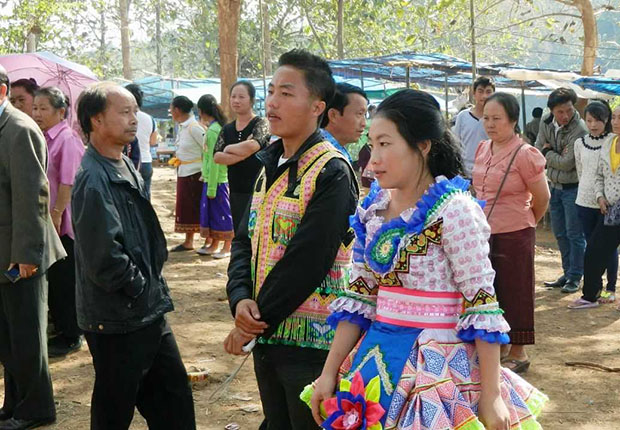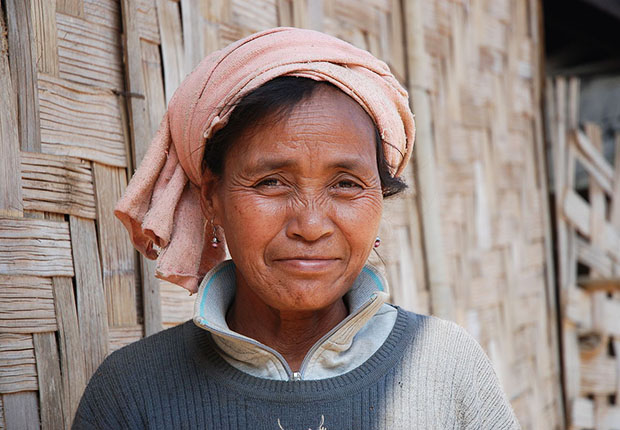Only accounting for nearly 25 percent of Lao people, Laos Theung is ready to be the second main group in Laotian society. Laos Theung often located in the midland of Laos, mainly in the valleys and mountain slopes along Mekong River. Nowadays, although they are not the main group anymore, Laos Theung is the first one who is considered as Laotian long before Laos Loum’ s appearance. Let’s see whether they will share any characteristics or have any differences.
Community & Family
“Laos Theung” literally means Midland Laos which clearly points out their living area and similar to Laos Loum, they also live in a village with nomadic lifestyle, but in a smaller size. Each village will have a ritual leader, usually the most experienced one who is in charge of important rituals. At this point, Laos Loum and Laos Theung are quite similar to each other. In fact, Laos Theung is the dominant group in Laos at first and later on, after Laos Loum’ s immigration, they moved to the second place.

Although nuclear family (only parents and unmarried children) is popular in Laos Loum and also in the modern society nowadays, Laos Theung prefers extended family which consists of grandparents, parents, children, etc. Additionally, they follow patrilineal family system. However, for some ethnic groups, after marriage, the son-in-law must live with the bride’s family for several years as a compensation for bride’s price.
Polygyny (one man has more than one wife) is allowed in Laos Theung’s community traditionally. As we have mentioned above if the groom don’t have enough many to pay bride’s price, he will have to live at bride’s house to pay off the debt, therefore, not everyone has enough capability to marry a second wife as he wants to. There is a special case which they still can get married in Lamet. For instance, Lamet men can marry two sisters from one family.
Village & Housing
Comparing to Laos Loum’ s village, Laos Theung’ s village somehow is smaller in size, just around 20 to 30 households in a village located in mountain slope since Laos Loum immigration in 1993. Ritual practices are carried out by a ritual leader or a village spirit practitioner; the most experienced and admirable person in the village. He/She is also the one who will identify the most suitable location for village site. For each ethnic group, the arrangement is different and has its own unique characteristics. In Lamet village, the men communal house is put in the center of the village, but in Kamu village, there is a separated communal house for adolescent boys and strangers.
The same material as Laos Loum house, Laos Theung house are also built on wooden or bamboo piles at the height of 1 or 2 meters above the ground. Since they prefer extended family, their houses are usually very big in size with a kitchen inside the house. Each village must be located near a stream to maintain the linkage to water and must have a rice barn. It might be on the edge of Lamet village or near Kamu house.
Agriculture
Since Laos Theung is not as developed as Laos Loum, agriculture plays an important role in Laos Theung’s economy. Their main activities will be farming and hunting. They prefer to grow glutinous rice while some other prefers ordinary rice. Hunting is the main jobs of men when they will bring home wild pig or deer. The jobs of woman when they are in the forest are different: collecting mushroom, rattan sprout, etc. Fishing is also carried out but not frequently since their geographical area is upland and is not near the river in lowland Laos.
Practices & Traditional Custom
The main religion of Laos Theung people is Animism, which mean they believe in spirit around. In contrast, a part of Laos Thueng still believes in Buddhism. The role of a spirit practitioner is clearly important in ritual ceremony which decides village sites, marriages, funerals etc. They always pay respect to their ancestors and believe their ancestor’s spirits are still around.

In term of traditional costume, Laos Theung wear the same style with Laos Loum, the “sinh”, long skirt, but the main difference is fabric. Laos Loum usually use silk in their clothes, meanwhile, Laos Theung prefers cotton in their costume, a part because of its convenient and easy-making.
Ethnic Groups
Laos Theung originates from Southern China People who has emigrated from China to Northern Laos. Currently, Khmu is the main ethnic group in Laos Theung and also Laos’ Khmu comprises of about 88 percent of total Khmu in South East Asia. In the north of Laos, Khmu and Lamet people are regarded as Laos Theung. The Katang and Kamong ethnic groups are in the central and in the south of Laos, there is an existence of Jru’ (Loven) and Brao (Lave). All of these ethnic groups belong to Mon-Khmer linguistic; therefore, their languages are quite similar. Despite of that, they have no written language, but only spoken language.
The Laos Theung, considered the first Lao people, hold a significant place in the history and culture of Laos, making them an intriguing aspect to explore during a Laos tour. Exploring Laos Theung villages, learning about their agricultural practices, and witnessing their vibrant festivals can offer a unique and authentic experience. By immersing oneself in the world of the Laos Theung, travelers can gain a deeper appreciation for the historical and cultural foundations of Laos, creating meaningful connections and enriching their overall tour experience.

